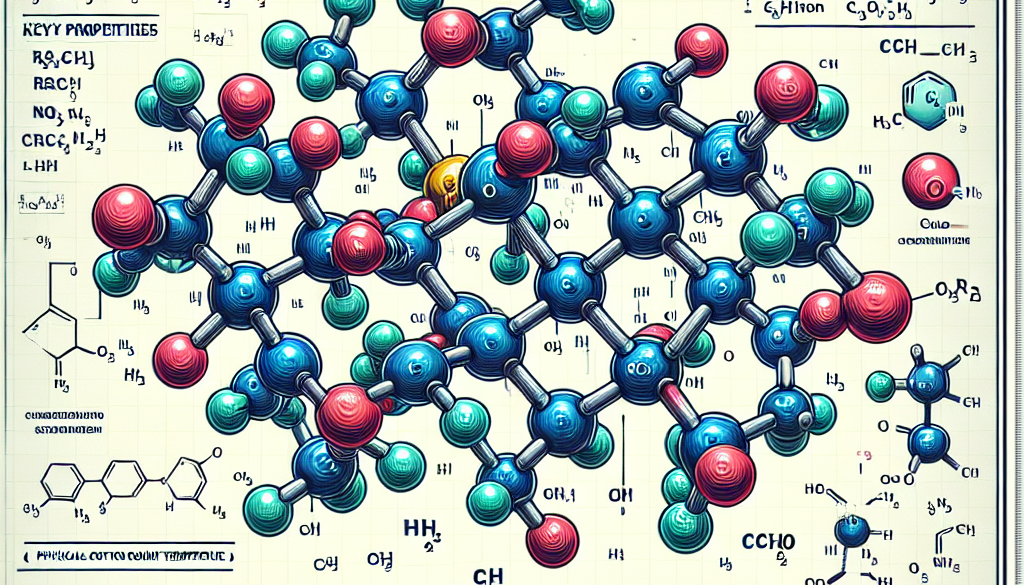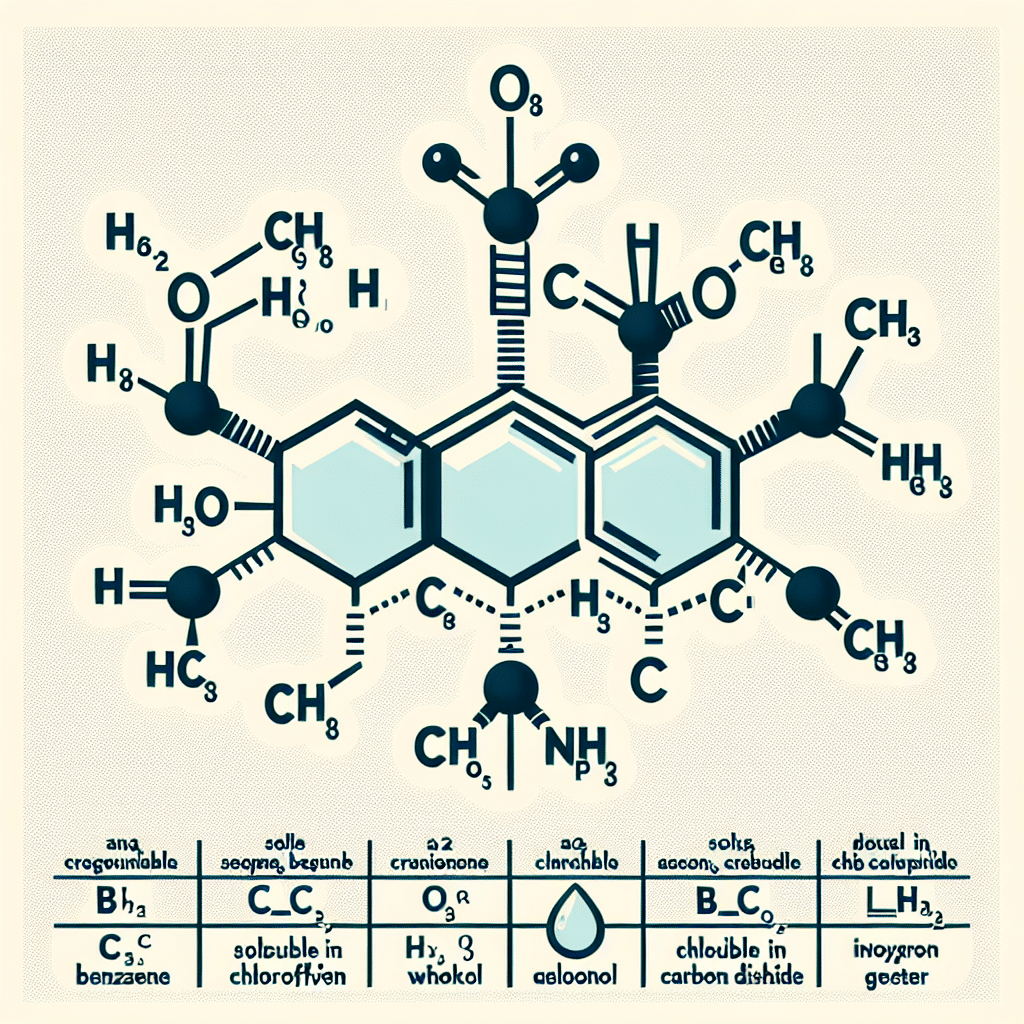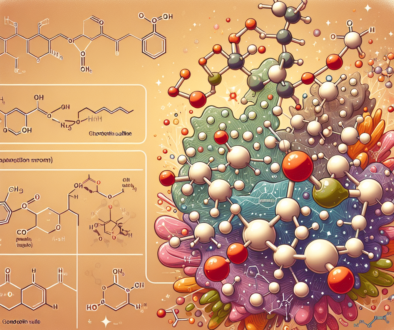Resorcinol Structure: Chemical Formula and Properties
-
Table of Contents
- Resorcinol Structure: Exploring Its Chemical Formula and Properties
- Understanding Resorcinol’s Chemical Identity
- Chemical Formula and Molecular Structure
- Physical Properties of Resorcinol
- Chemical Properties and Reactivity
- Industrial and Commercial Applications
- Health and Safety Considerations
- Environmental Impact
- Conclusion: Key Takeaways on Resorcinol
- Discover ETChem’s Protein Products
Resorcinol Structure: Exploring Its Chemical Formula and Properties
Resorcinol is a fascinating compound that plays a crucial role in various chemical and industrial processes. Understanding its structure, chemical formula, and properties is essential for chemists, researchers, and industries that rely on this versatile organic compound. In this article, we will delve into the world of resorcinol, exploring its molecular makeup, characteristics, and applications, providing valuable insights into its significance in the scientific community.
Understanding Resorcinol’s Chemical Identity
Resorcinol, also known as 1,3-dihydroxybenzene, is an organic compound with the formula C6H4(OH)2. It is one of three isomeric benzenediols, the others being hydroquinone and catechol. Resorcinol is a white, crystalline solid that exhibits a faint, characteristic odor and is moderately soluble in water.
Chemical Formula and Molecular Structure
The chemical formula of resorcinol is C6H6O2, indicating that each molecule consists of six carbon atoms, six hydrogen atoms, and two oxygen atoms. The molecular structure of resorcinol features a benzene ring with two hydroxyl groups (–OH) attached to the 1st and 3rd carbon atoms, hence its systematic name, 1,3-dihydroxybenzene.
Physical Properties of Resorcinol
- Melting Point: Resorcinol has a melting point of 110 to 111 degrees Celsius.
- Boiling Point: It boils at 276 degrees Celsius.
- Solubility: It is moderately soluble in water and readily soluble in most organic solvents.
- Appearance: Resorcinol is typically found as a white or light pink crystalline solid.
Chemical Properties and Reactivity
Resorcinol is known for its chemical reactivity, primarily due to the presence of two hydroxyl groups. These groups make resorcinol a versatile compound that can undergo various chemical reactions, including:
- Electrophilic Substitution: Resorcinol can participate in electrophilic aromatic substitution reactions, where the hydroxyl groups direct the incoming electrophiles to the ortho and para positions.
- Condensation Reactions: It can form condensation products with aldehydes, ketones, and other carbonyl-containing compounds.
- Oxidation: Resorcinol can be oxidized to quinones in the presence of oxidizing agents.
Industrial and Commercial Applications
Resorcinol’s unique properties make it a valuable compound in various applications:
- Adhesive Industry: It is used in the production of wood adhesives, particularly in marine applications due to its water-resistant properties.
- Pharmaceuticals: Resorcinol serves as an antiseptic and disinfectant in topical medications for skin disorders.
- Dyes and Pigments: It is a precursor to numerous dyes and pigments, including fluorescein and various azo dyes.
- Chemical Synthesis: Resorcinol is a starting material for the synthesis of plasticizers, UV absorbers, and agricultural chemicals.
Health and Safety Considerations
While resorcinol is valuable in many sectors, it is essential to handle it with care due to its potential health risks. It can cause skin irritation and may have harmful effects if ingested or inhaled in large quantities. Therefore, proper safety measures, such as wearing protective gear and working in well-ventilated areas, are crucial when dealing with resorcinol.
Environmental Impact
Resorcinol can enter the environment through industrial discharges and product usage. It is biodegradable and does not accumulate in the environment; however, monitoring its levels in water bodies is necessary to prevent potential ecological harm.
Conclusion: Key Takeaways on Resorcinol
In summary, resorcinol is a versatile organic compound with a distinct chemical structure that lends itself to various industrial and pharmaceutical applications. Its chemical formula, C6H6O2, and the presence of two hydroxyl groups contribute to its reactivity and usefulness. While beneficial, it is essential to consider the health and environmental implications of resorcinol use.
Discover ETChem’s Protein Products
If you’re interested in high-quality protein products, consider exploring ETChem’s offerings. They specialize in a range of collagens suitable for various industries, ensuring top-notch solutions for your protein needs.
About ETChem:
ETChem, a reputable Chinese Collagen factory manufacturer and supplier, is renowned for producing, stocking, exporting, and delivering the highest quality collagens. They include marine collagen, fish collagen, bovine collagen, chicken collagen, type I collagen, type II collagen and type III collagen etc. Their offerings, characterized by a neutral taste, instant solubility attributes, cater to a diverse range of industries. They serve nutraceutical, pharmaceutical, cosmeceutical, veterinary, as well as food and beverage finished product distributors, traders, and manufacturers across Europe, USA, Canada, Australia, Thailand, Japan, Korea, Brazil, and Chile, among others.
ETChem specialization includes exporting and delivering tailor-made collagen powder and finished collagen nutritional supplements. Their extensive product range covers sectors like Food and Beverage, Sports Nutrition, Weight Management, Dietary Supplements, Health and Wellness Products, ensuring comprehensive solutions to meet all your protein needs.
As a trusted company by leading global food and beverage brands and Fortune 500 companies, ETChem reinforces China’s reputation in the global arena. For more information or to sample their products, please contact them and email karen(at)et-chem.com today.





